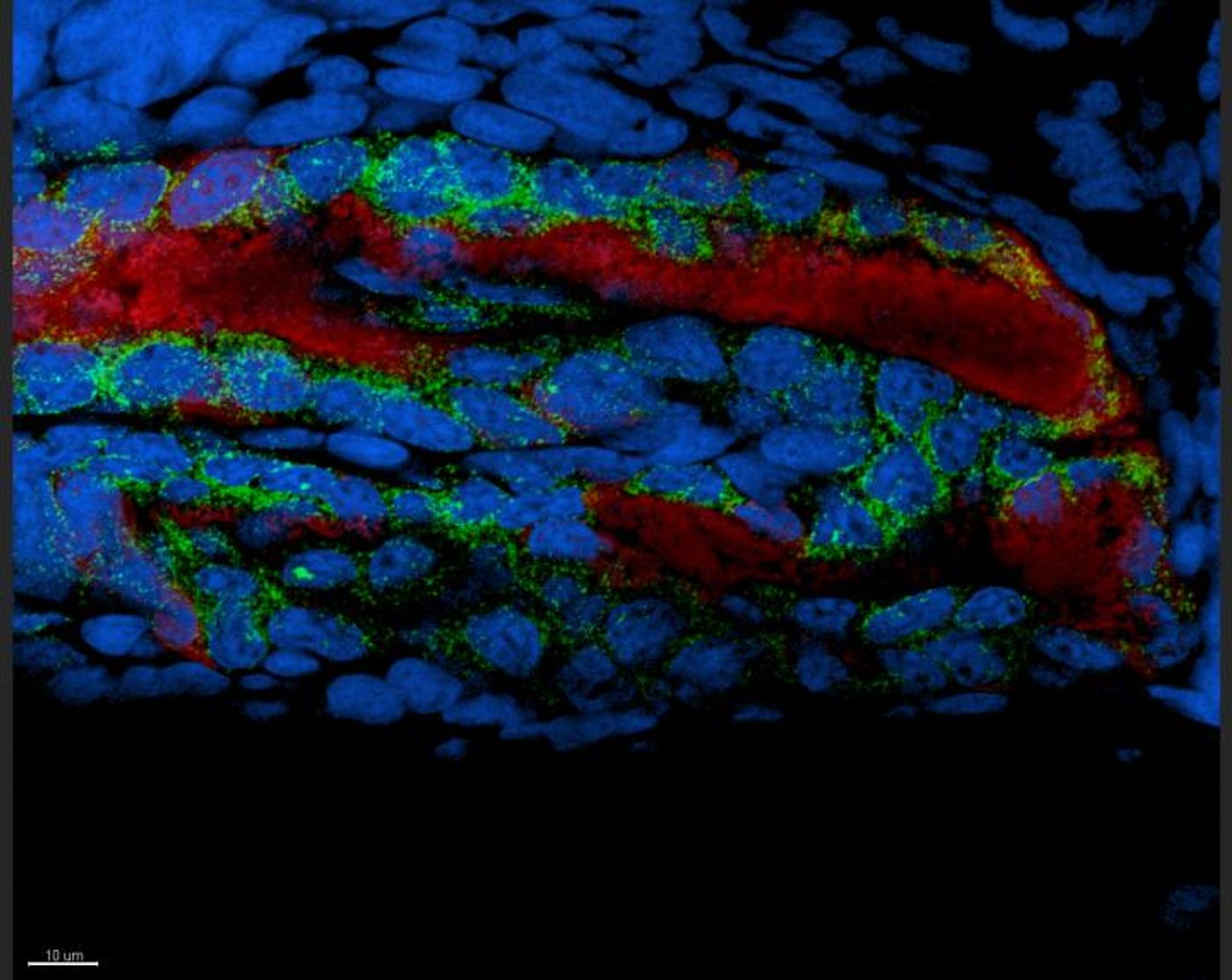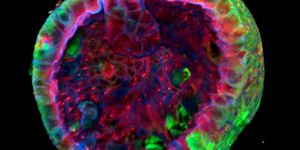Bioluminescent Bacteria Can Change Gene Expression in Its Squid Host
The Hawaiian bobtail squid plays host to bioluminescent bacteria. It’s a nocturnal creature, and the light emitting from the symbiotic microbes in its body helps camouflage it in the shallow waters where it lives. The squid can even vary the intensity of light being emitted based on environmental factors like cloud cover. Researchers at the University of Hawai'i (UH) at Mānoa School of Ocean and Earth Science and Technology (SOEST) have now determined that the bacteria, which live in the light organ of the squid, can change gene expression levels in their squid host. The findings have been reported in the Proceedings of the National Academy of Sciences (PNAS).
Symbiosis is common in biology. Scientists with the Pacific Biosciences Research Center (PBRC) at SOEST have been studying the symbiosis between this squid and Vibrio fischeri, its symbiont. In the lab of director Margaret McFall-Ngai, graduate student Silvia Moriano-Gutierrez wanted to know if the bacterium was affecting gene expression throughout the squid.
The researchers assessed gene expression in the eye, the light organ and the gill in three situations - squid hosting wild type bacteria, another group of squid carrying Vibrio fischeri, and a last group colonized by a bacterial strain that doesn’t emit light - a dark mutant called delta lux. It’s thought that the squid’s light organ coordinates with the eye in modulating light output.
"My first surprise was that, in comparing the early influences of colonization by either wild-type bacteria or light-defective ones, we found that the most significant driver of gene expression in the light organ is NOT the presence of the bacteria themselves, but rather the presence of bacteria that make light," said Moriano-Gutierrez. "In other words, light production by the symbionts was a more significant driver of host gene expression." A host squid will reject the delta lux strain after 48 hours, highlighting the ability of the light organ to expel a strain of bacteria it doesn’t want.
The eye and gill were found to respond to wild-type and delta lux bacteria in a similar way. "However, the next big surprise was that, while the eye responded with robust changes in the expression of dozens of genes when the light organ is colonized by wild-type, when colonized by the dark mutant, NO genes changed their regulation in the eye," said Ruby. "The data support the idea that coordination between eye and light organ is important for the use of light in the animal's behavior."
"In this way, the onset of symbiosis orchestrates a coordinated, regulated expression of multiple genes, across different organs, both colonized and distant, and may be triggered by diverse symbiont signals, indicating that the dialog between host and symbionts is a more complex conversation than we anticipated," added McFall-Ngai. She is featured in the video below discussing the squid.
The researchers want to learn more about how the symbiotic bacteria triggers a response in the various parts of the squid.
Sources: AAAS/Eurekalert! via University of Hawaii at Manoa, PNAS










